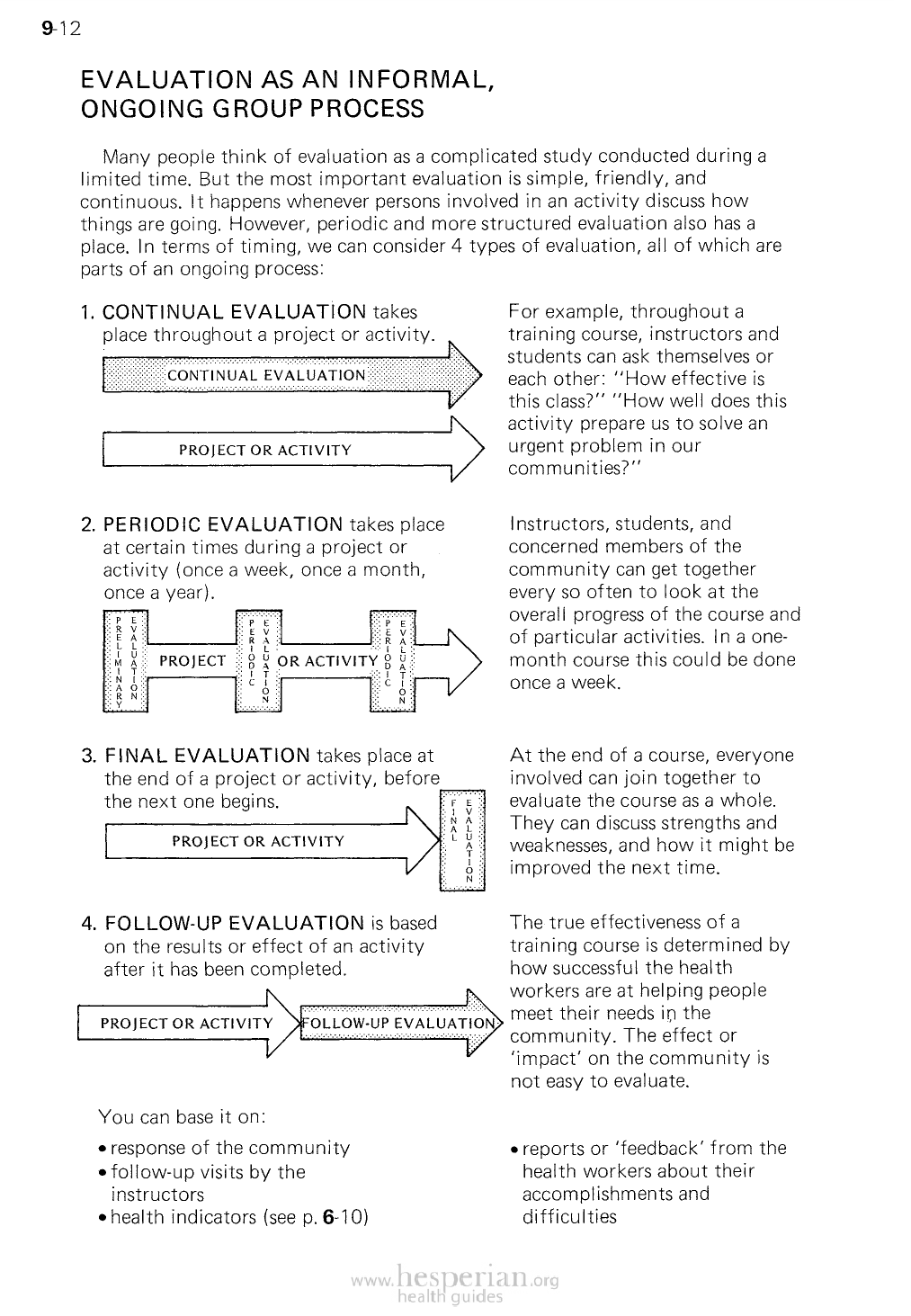
9-12
EVALUATION AS AN INFORMAL,
ONGOING GROUP PROCESS
Many people think of evaluation as a complicated study conducted during a
limited time. But the most important evaluation is simple, friendly, and continuous.
It happens whenever persons involved in an activity discuss how things are going.
However, periodic and more structured evaluation also has a place. In terms of
timing, we can consider 4 types of evaluation, all of which are parts of an ongoing
process:
1. CONTINUAL EVALUATION takes
place throughout a project or activity.
CONTINUAL EVALUATION
PROJECTOR ACTIVITY
For example, throughout a
training course, instructors and
students can ask themselves
or each other: “How effective
is this class?” “How well
does this activity prepare us to
solve an urgent problem in our
communities?”
2. PERIODIC EVALUATION takes
place at certain times during a
project or activity (once a week,
once a month, once a year).
PROJECT
OR ACTIVITY
Instructors, students, and
concerned members of the
community can get together
every so often to look at the
overall progress of the course
and of particular activities. In a
one-month course this could be
done once a week.
3. FINAL EVALUATION takes place
at the end of a project or activity,
before the next one begins.
PROJECTOR ACTIVITY
At the end of a course, everyone
involved can join together to
evaluate the course as a whole.
They can discuss strengths and
weaknesses, and how it might
be improved the next time.
4. FOLLOW-UP EVALUATION is based
on the results or effect of an activity
after it has been completed.
PROJECT OR ACTIVITY FOLLOW-UP EVALUATION
You can base it on:
• response of the community
• follow-up visits by the
instructors
• health indicators (see p. 6-10)
The true effectiveness of a
training course is determined
by how successful the
health workers are at helping
people meet their needs in
the community. The effect or
‘impact’ on the community is
not easy to evaluate.
• reports or ‘feedback’ from
the health workers about
their accomplishments and
difficulties